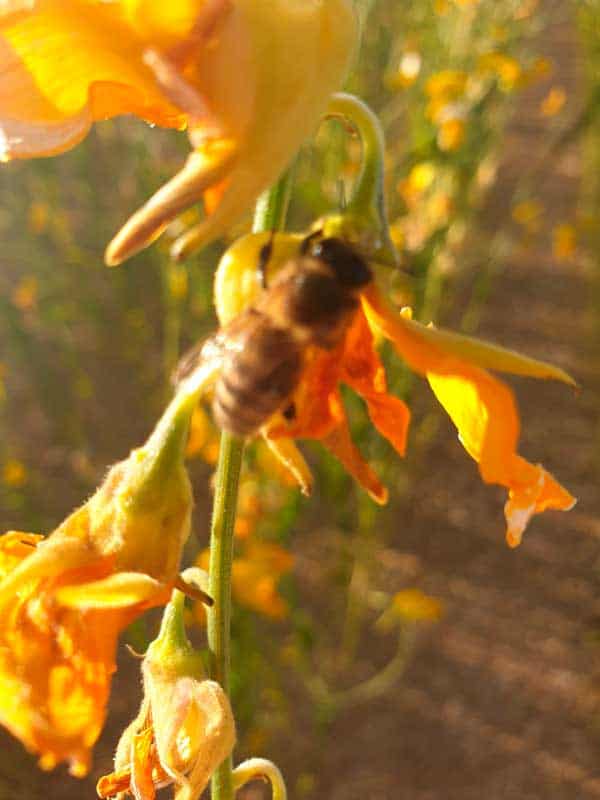Content
Auxiliary fauna
It is called exactly auxiliary fauna to the group of animals usually invertebrates, which help fight the pests that affect our agricultural crops, acting as predators on animals harmful to our crops.
Usually two large groups are distinguished:
- Predators: organisms that feed on other organisms, and in turn can be.
- Polyphages – when feeding on various pests.
- Oligophages: they feed on species of the same family.
- Monophages: feeds on species of the same genus
- Parasites: organisms that are introduced into others and develop inside or on them.
The aforementioned insects are classified accordingly, based on Bahena (2008), Cano and Carballo (2004) and Morón and Terrón (1988), following agroecological pest management systems that seek sustainability.
Biodiversity
At present there are numerous species that serve as refuge plants for species of auxiliary and polarizing fauna.
These species serve as control tools for the proliferation of an ecosystem rich in these organisms.
Different shelter plants are differentiated:
- Not sensitive to pests and diseases of our main crop.
- Non-invasive, since their control increases production costs.
- Little sensitive to polyphagous pests.
- Hosts of monospecific species, plants that are only hosts of a single organism.
- Species with different categorization at the vegetative level, for a wide admission of auxiliary organisms and pollinators.

Crescent sunn and its host power
Crescent Sunn, due to its vegetative description, would be included as a host species of auxiliary fauna in the aforementioned group of species of different categorization at the vegetative level.
The evidence as a refuge plant and attractant of pollinating insects is clear both in the open field and in closed agricultural space, thus giving a very positive result in the reception of these organisms.
Crescent sunn (of the species Crotalaria juncea) is endorsed by different scientific, public and research organizations as a recipient plant of dragonflies, polyphagous species of our pests, even in Latin American countries its use is widespread in particular places such as patios, terraces and private homes for the natural eradication of the Dengue mosquito.
Example of pest control by families
Below, we detail the classification according to Dr. Fernando Bahena of the families and species and the organisms he controls.
Coleoptera – Coccinellidae – Aphids, scales, suckling pigs and whiteflies.
Coleoptera – Cleridae – Larvae of butterflies, weevils and chicharritas.
Coleoptera – Melyridae – Eggs, larvae, pupae, adults of small size and soft body of various insects.
Coleoptera – Carabidae – Larvae and pupae of butterflies and wasps.
Hemiptera – Anthocoridae – Thrips, white fly nymphs, small larvae of butterflies, mites and aphids.
Hemiptera – Geocoridae – Small insects of different groups.
Hemiptera – Nabidae – Aphids and larvae of butterflies.
Hemiptera – Reduviidae – Aphids, butterfly larvae, beetles and chicharritas.
Hemiptera – Pentatomidae – Beetles and catarinites pest.
Hemiptera – Phymatidae – Bees, flies, butterflies and other bedbugs.
Diptera – Asilidae – Chapulines, beetles, wasps, bees, eggs of chapulines and other flies.
Diptera – Syrphidae – The larvae are predators of aphids and small larvae of butterflies.
Neuroptera – Chrysopidae – Its larvae feed on aphids, scales, white flyers, mites, eggs, butterfly larvae, beetles and thrips.
Neuroptera – Hemerobiidae – Adults and larvae are predators of aphids, butterfly larvae and other body insects
soft.
Hymenoptera – Formicidae – Most are generalist predators.
Hymenoptera -Vespidae – Generalist predators.
Dermaptera – Forfi culidae – Aphids, eggs and larvae of butterflies and moths.
Mantodea Mantidae Generalist predators.
Odonata – Calopterygidae – Flies, mosquitoes and other small insects.
Odonata – Coenagrionidae – Flies, mosquitoes and other small insects
Need help?
From ESSEEDS we distribute seeds internationally and we will be happy to advise you on this issue (auxiliary fauna) and others that may affect your crops. To contact us follow this link.





